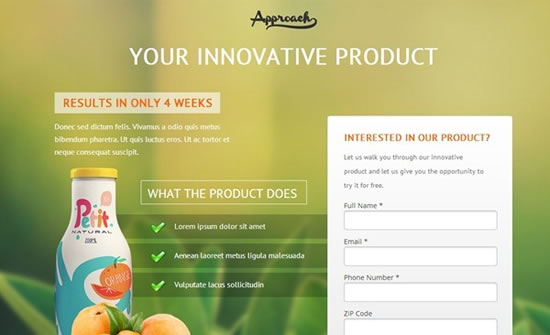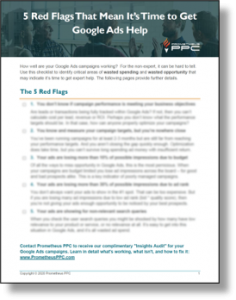The 3 Keys to Google AdWords Landing Pages (and Successful AdWords Campaigns!)
A “landing page” is the first page that a new visitor to your website experiences. A “Google AdWords landing page” is the first page that you send new visitors to when they click on your Google PPC ad.
You need a visitor’s first experience with your business to be fantastic. You want an ideal prospect to immediately understand why your business offer is perfect for him. You want him to easily see how he can take the next step.

That’s challenging enough to accomplish in a landing page. The folks over at InstaPage recently did a nice job of breaking down the basic elements into a helpful infographic. You may want to check out.
But Google makes it even harder. If you flaunt their AdWords rules, Google will not approve your ads to show. Then potential prospects will never see your otherwise wonderful landing page at all. Game over. But that’s not all…
Even if Google allows your landing page, they might stack the game against you.
How? If you don’t create AdWords landing pages that Google likes, Google will hobble your keywords and your account with low “Quality Scores”. A low Quality Score means:
- Your ads will show less frequently
- Your ads will show lower on the page
- Your ads will cost you more for each click
So what does Google like? They like landing pages that make their customers happy. This means landing pages that are relevant to what a user is searching for, transparent in their intent, and helpful in providing clear next steps.
Do you want to create successful Google AdWords landing pages and be able to run successful AdWords ad campaigns? Then you need these 3 essential keys:
(P.S. – Here’s WHY you need an AdWords campaign for your business, in case you didn’t know!)
1) Message Match
An effective AdWords campaign has tight “message match” between keywords, ad copy and landing page.
Your ad has a headline and a sub-headline. Ideally, your landing page would have the same headline and sub-headline (though they can be longer than what the ad allows). The rest of the page would then expand on those concepts.
In this way a visitor who clicks your ad sees exactly what he’d expect to see on your landing page. Google also sees that tight relevancy match and rewards you for it with higher Quality Scores.
2) Keyword Targeting
To achieve the high relevance described above, the main keywords that you bid on in your AdWords account need to appear both in your ad copy and on your landing page.
But don’t simply repeat the same keyword over and over on your landing page. This isn’t 2010 any longer!
Instead, you should use a variety of related keywords and industry-specific language naturally throughout the page. Google has become very good at analyzing page content semantically. They will give you credit for a well-written, relevant, and authoritative landing page by giving you higher Quality Scores.
3) Differentiation
Few AdWords visitors will click on only your ad, spend lots of time reading your website, and then dutifully contact you. That’s not how the real world works.
Instead, searchers will click multiple ads, quickly scan each landing page, and compare them mentally. They will then choose one (or a few) for taking next steps.
Therefore, it’s critical to help good prospects easily understand how your business offer is different from and better than all the rest.
Ideally you convey this differentiation up front in the headline / sub-headline. Your differentiators can go elsewhere, but ensure that visitors will see them upon first glance at the landing page.
Your business needs to clearly differentiate itself to succeed online. But this also impacts your AdWords success directly. An AdWords landing page that doesn’t stand out is quickly abandoned.
Landing page abandonment results in high bounce rates and little time spent on the site. (“Bounce rate” is the % of visitors who view just a single page before leaving your website.) Google tracks these behaviors. You must create a differentiated landing page that engages visitors and keeps them on your website longer in order to achieve higher Quality Scores.
So… it turns out that I couldn’t limit this list to just 3 keys. There is one more essential element that will cause your entire AdWords campaign to fall apart if not followed:
4) Call to Action (CTA)
It may be obvious to you what a visitor to your landing page should do next, but it’s rarely obvious to them. And a confused visitor quickly becomes a lost visitor!
Put one big, high-contrast button prominently on the page with a clear next action that both you and the visitor highly desire. For example: “Contact XYZ Agency for a Free Consultation”. This button should lead directly to the action that you count as an AdWords conversion (for example, a contact form submission).
Website visitors who don’t know what to do next will become disenchanted and leave. Help visitors by giving them an easy next step, especially if that means clicking through to another page. This increases website engagement, which leads to higher Quality Scores.
Of course, there are also other considerations for creating an effective Google AdWords landing page. You need make the page scannable, include trust factors appropriately, add enhancing imagery, etc.
But first address these “big 4” keys to Google AdWords landing pages. You will then be well on your way to AdWords success.
Need help with your landing pages? That’s my specialty. Contact me here.


Nice tips on creating prominent landing pages. And these techniques can lower your budget with improved ad relevance and quality scores.
Hey Andrew!
This article is really great. I would love to chat more with you. Shoot me a line at Kieran@instapage.com
Thanks!
We are spending most of our timing through the social medias especially facebook. Within that we usually share information to our closest persons. Apart from that we can learn new things or news through this only. So here the information is much valuable and using the trending hashtags was really informative. Thank you for sharing and please keep update like this.
Just used this for my adwords campagin. Thanks guys